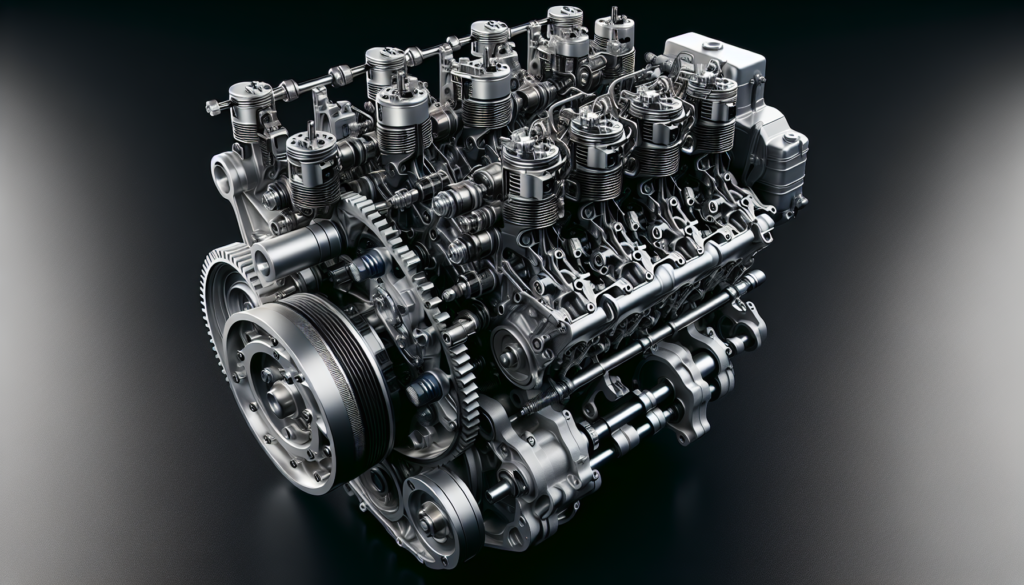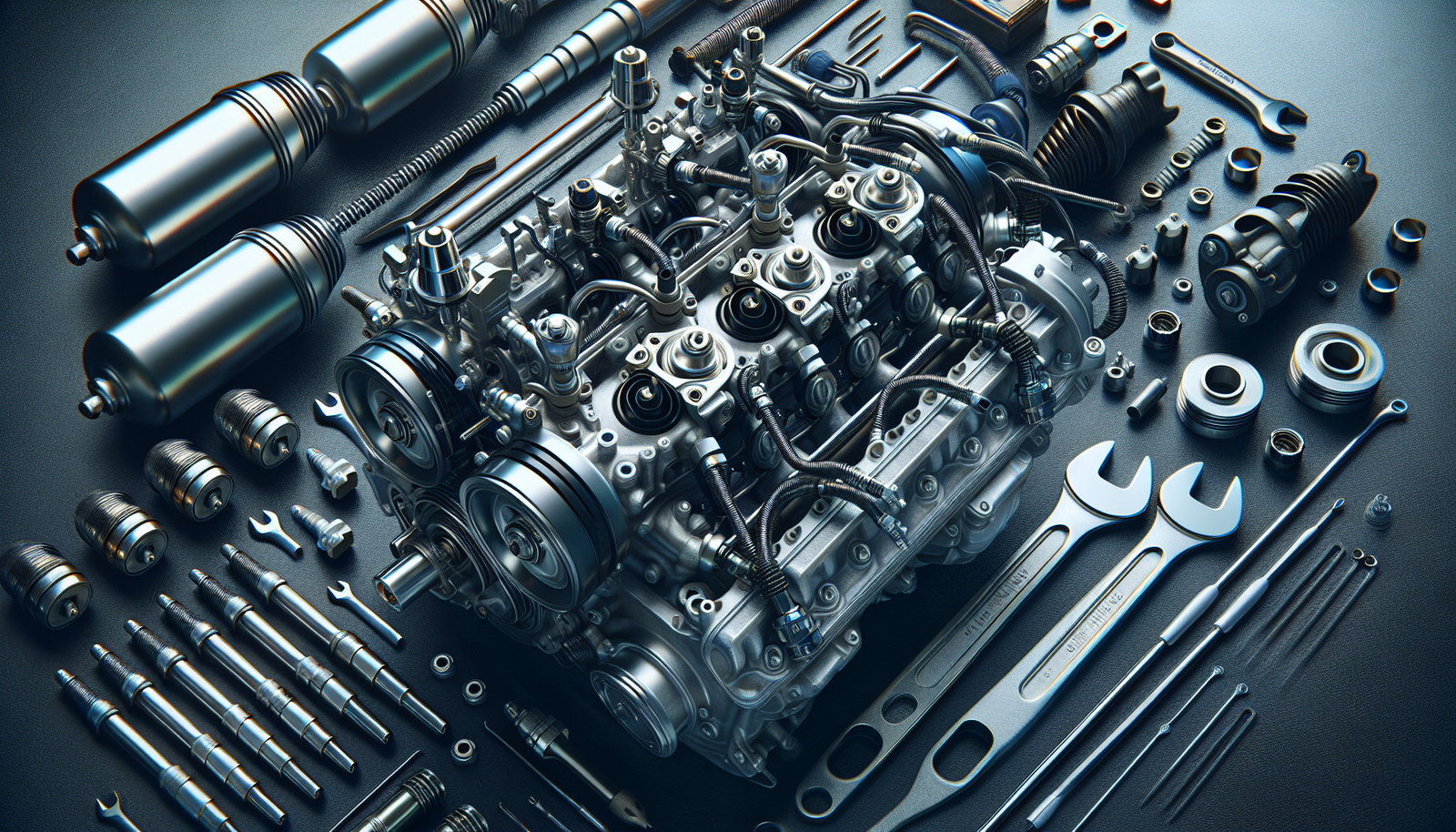Boating is your passion and being able to navigate clear seas or bustling marinas fills your heart with contentment. Yet, your precious time on the water could be interrupted if you overlook routine maintenance, particularly of the engine. To keep your boat operating at peak performance, certain parts demand regular inspection. This article offers key insight into the top 10 marine engine parts and components that should be checked frequently. By paying careful attention to these essentials, you can avoid unexpected mechanical issues, ensuring smooth and enjoyable voyages every time.

Boat Engine’s Spark Plugs
Ensuring the health of your boat’s engine starts with the smallest of parts – the spark plugs. The essential role of a spark plug is to ignite the air and fuel mixture inside the engine’s cylinder so your boat can run. Without functioning spark plugs, your boat isn’t going anywhere.
Importance of Spark Plugs
In addition to their role in ignition, spark plugs are also key in transferring heat away from the combustion chamber. Hence, a properly installed and functioning spark plug plays a pivotal role in optimizing engine performance, fuel economy, and emissions.
Signs of Worn Out Spark Plugs
Your spark plugs need attention when you start noticing changes in your boat’s performance. If you experience decreased fuel efficiency, difficulty starting the engine, or irregular engine performance like misfires and rough idling, you might be dealing with worn-out spark plugs. These issues not only disrupt your ride but also cause unnecessary engine damage and increased emissions.
Steps in Inspecting Spark Plugs
It’s quite simple to check the status of your spark plugs. Start by removing the spark plug lead, then use a spark plug socket to remove the spark plug itself. Look for carbon deposits, oil, or wear on the plug. If you see any of this, it’s time for a replacement.
Carburetor Components
A boat won’t run without a working carburetor, much like a body won’t function without a beating heart. Try saying these words without it sounding like life-or-death!
Role of the Carburetor in Boat Engines
The carburetor plays the important job of mixing air with fuel. This mixture is then ready to be ignited by the spark plug, creating the combustion that drives your boat. Hence, the carburetor sets the stage for all other engine operations, making it critical to your boat’s overall performance.
Identifying Issues in the Carburetor
carburetor problems are often indicated by hard starting, excessive fuel consumption, black smoke from the exhaust, or a poor running condition. These signs reflect a disruption in the air-fuel ratio caused by a faulty carburetor.
How to Inspect the Carburetor
Inspecting the carburetor involves looking for signs of fuel leakage, flooding, and clogs. These issues are often a result of improper maintenance, and letting the boat sit for extended periods without use. Regular cleaning and proper storage can largely mitigate such problems.
Engine’s Fuel Pump
Fuel pumps – the silent coordinators of your boat’s engine! And like most quiet workers, you’ll only miss them once they’re gone.
Significance of a Functioning Fuel Pump
The fuel pump feeds fuel from the tank to the engine. A well-functioning fuel pump ensures a smooth and constant flow of fuel, which is crucial for consistent engine performance, particularly at high speeds.
Symptoms of a Failing Fuel Pump
Symptoms of a failing fuel pump include power loss, engine sputtering at high speeds, or unexpected engine failure. Your boat might be practically gulping fuel, yet unable to meet its power needs. These are tell-tale signs that your fuel pump is not doing its job well.
Inspection Process of the Fuel Pump
When inspecting the fuel pump, look for any fuel leakage or damage to the pump. Should the pump not be delivering the right amount of fuel, it may need replacement. Don’t skip this inspection, as a failing fuel pump can lead to expensive engine damage.

Distributor and Ignition Components
Imagine your boat’s engine as an orchestra, with every component playing a part. The distributor and ignition are the conductors, setting the rhythm for optimal performance.
The Need for a Working Distribitor and Ignition
A working distributor and ignition system ensures that the spark plugs receive sparks at the right time, helping the engine to run smoothly. The resultant ignition of the air-fuel mixture pushes the pistons, driving the boat forward.
Symptoms of Distributor and Ignition Problems
Symptoms of distributor and ignition problems include a misfiring engine, poor fuel economy, and difficulty starting your boat. Additionally, if the ignition switch fails, it could unexpectedly cut the power supply to the ignition and fuel systems, causing the engine to stall.
Tips on Inspecting the Distributor and Ignition
During inspection, firstly check the spark plug wires for any damage or wear and replace as needed. Next, clean any dirt or corrosion on the distributor cap contacts. Finally, ensure that the ignition switch operates smoothly and replace any faulty parts.
Boat Engine’s Water Pump
The water pump, though often overlooked, is a key component that keeps the engine cool and prevents it from overheating.
Purpose of the Water Pump
The water pump circulates coolant through the engine and back to the radiator for cooling. An adequate coolant flow is vital in preventing the engine from overheating and the disastrous consequences that follow.
Warning Signs of Water Pump Failure
Symptoms of a faulty water pump include an overheating engine, coolant leakage, and steam coming out from the engine. If you observe any of these, check the water pump immediately.
Checking the Water Pump
During inspection, look for physical damage to the water pump impeller and signs of coolant leakage around the pump area. Listen carefully for any strange noises coming from the pump, as this might indicate a failing water pump bearing.
Marine Battery
Without a charged, operational marine battery, your boat is essentially a very expensive floating deck!
Role of the Marine Battery
The marine battery is responsible for starting up the engine and powering all the boat’s electrical systems. Thus, ensuring its health is key for any successful voyage.
Signs of Battery Issues
Symptoms of battery issues include difficulty starting the engine, weak or dimming lights, and visibly corroded or damaged battery terminals. If you’re dealing with any of these, it might be time to consider a battery replacement.
How to Inspect the Battery
Inspecting the battery involves checking the voltage level with a multimeter and examining the physical condition of the battery. Clean any corrosion on terminals and tighten loose connections. Be sure to regularly recharge the battery and keep it well maintained.
Engine Belts and Hoses
Belts and hoses, like unsung heroes, keep your engine’s many parts connected and running together in harmony.
Importance of Belts and Hoses in the Engine
Belts and hoses play a critical part in your boat’s engine by connecting different parts and carrying various fluids needed for operation. Any damage to these can disrupt engine function and lead to a breakdown.
Signs of Wear and Tear on Belts and Hoses
Observable symptoms of worn belts and hoses include visible cracks, leaks, and squealing noises. If you notice any of these, it’s a clear signal that you need to replace them.
Inspection Guide for Belts and Hoses
Inspection should involve a thorough visual assessment for any signs of damage or wear such as cracking, bulging, or leaks. Ensure all connections are secure and replace any part as needed.
Manifold and Risers
Manifolds and risers – not often the first thing that comes to mind when you think about your boat engine, but their role is far from insignificant.
Function of the Manifold and Risers
The exhaust manifold collects exhaust gases from the engine, while risers direct these gases out and away from the engine. The proper functioning of these components ensures a reduction in engine noise and prevents backflow of water into the engine.
Indications of Potential Manifold and Riser Issues
If you’re dealing with poorly running engine, increased engine noise, or even water in the oil, you might blame manifold and riser issues. These symptoms suggest that exhaust gases and potentially damaging water are not being effectively diverted away.
Inspection Process for Manifold and Risers
During inspection, check for visible corrosion or damage, and signs of water leakage. A thermal image camera can also be used to identify any hot spots, which may suggest internal blockages or leaks.
Oil Filter
Oil filters might be small, but they have a big job to do in keeping your engine clean and running smoothly.
Significance of the Oil Filter
The oil filter is responsible for removing contaminants from the engine oil, helping to reduce wear and tear on the engine components and extending their life.
Signs Your Oil Filter May Need Replacement
Common signs that a change of oil filter is due include dirty exhaust smoke, reduced engine performance, or evidence of engine sputtering.
Steps in Inspecting Your Oil Filter
Inspection of the oil filter requires a visual assessment for leaks, damage, or clogging. Regularly replace the oil filter according to the manufacturer’s recommended schedule.
Engine Cooling System
A boat engine without a functioning cooling system is a disaster waiting to happen!
Importance of the Cooling System
The cooling system maintains the engine’s temperature within optimal operating limits, preventing overheating and damage to engine components.
Warning signs of Cooling System Issues
Tell-tale signs of cooling system issues include an overheating engine, coolant leaks or abnormal noises from the water pump.
Guide to Inspect the Cooling System
To inspect the cooling system, check the coolant levels and also its condition. Look for any leaks throughout the system, especially in the radiator, hoses, and water pump. Be sure to regularly flush the cooling system and replace the coolant as per the manufacturer’s guidelines to ensure a long and reliable engine operation.

